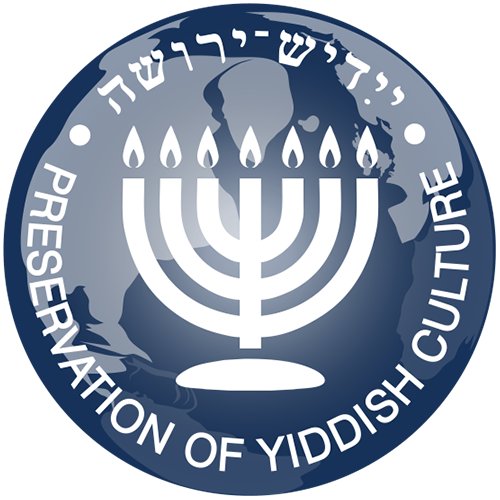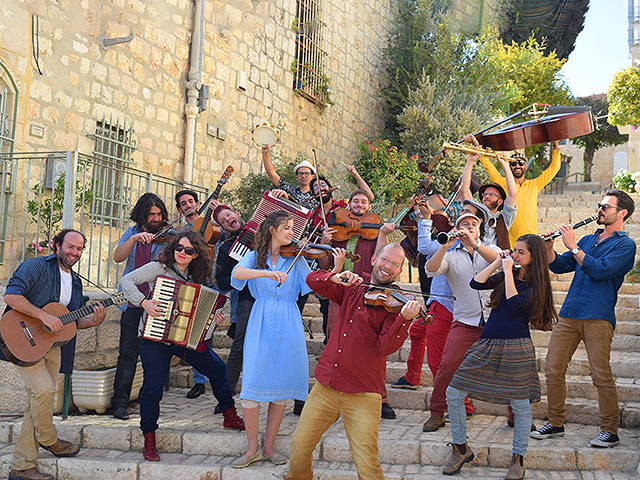Klezmer Music
Yiddish Glory:
Resurrecting archives of Jewish history
Psoy Korolenko &
All Stars Klezmer Band
Today’s Yiddish culture experiences a multi-faceted reemergence of its classic manifestations deemed by many, until recently, dying or already gone without a slightest hope of revival. One example of this process is the ongoing development of klezmer music that began about five decades ago.
By the middle of the 20th century, the original Eastern European tradition of the Ashkenazi folk music practically had come to an end. Yet, during the 1960s and 1970s, its revival began in the USA and Canada. By the late 1970s, klezmer music became a widespread North American genre, popular not only among Jews. It should be noted that this was the time when world music in general came into fashion. While relying on surviving musical notes and especially sound recordings, the postwar generation of klezmer musicians, being a part of this wave, were striving to reproduce the original 19th century folk style as authentic as possible.
Among the most prominent pioneers of this revival were Michael (Meyshke) Alpert and Walter Zev Feldman; both were born in the USA in the 1950s. Moisey (Moyshe) Beregovsky’s monumental collection of Jewish instrumental folk music, published in Russian (1987) and in English (2001), provided a significant stimulus for the growing popularity of klezmer compositions.
The old klezmer music was primarily created to accompany dancing. Its subgenres were named after Jewish folk dances: freylekhs, sher, hora, zhok, skochna, bulgar, etc. Naturally, this also led to the revival of traditional Jewish folk dances, alhough their authentic reproduction turned out to be a rather difficult task; until recently, choreography remained a poorly researched subject within Jewish folklore studies.
During the 1990s, klezmer music became simultaneously fashionable in North America, Western Europe and post-Soviet countries. Western European festivals of ethnic music would typically include klezmer performances. At the same time, a tradition of Klezfest festivals had emerged, dedicated specifically to Jewish folk music. In both North America and Europe such events attracted Jews and non-Jews alike among its audience, as well as among performers.
The development of klezmer music in Israel took a different route. The old musical tradition of this country was not completely broken, but the local klezmer music mainly dissolved into what is commonly known in Israel as “Hasidic music”, performed at weddings and such massively crowded religious festivities as the celebrations of Lag B’Omer on Mount Meron, near the grave of the famous Talmudic sage and mystic Rabbi Shimon bar Yochai. However, it remained outside the Israeli mainstream culture.
Musa Berlin, born in Tel Aviv in 1938, made a great contribution to the popularization of klezmer music in Israel. In particular, he was the first to draw attention to the unique musical tradition of the Palestinian klezmers, which developed among the descendants of Ashkenazi Jews who settled in the historical Land of Israel during the late 18th and early 19th century. One characteristic feature of the Palestinian klezmer music is a noticeable Oriental influence stemming from Arabs and non-Ashkenazi Jews.
A very influental figure on the Israeli klezmer scene is the clarinetist Giora Feidman. Born in 1936 in Argentina, he immigrated to Israel in 1957. Besides his successful career as a performer of classical music, he showed a great interest in klezmer melodies. His first solo album “Freylekhs and Hasidic Melodies”, released in 1971, became a landmark for klezmer fans all over the world. Unlike the American musicians who strove to reproduce the authentic styles based on the records from the 19th and early 20th century, Feidman turned the old folk melodies into classical performances.
Despite these early developments, “real” klezmer bands in Israel began to appear only in the early 2000s. In 2003, Gershon Leizerson, a Russian-born student of the Buchmann-Mehta School of Music, who had immigrated to Israel with his parents in the early 1990s, created the klezmer band called Nigun Hadash. Three years later, when he performed at the Canadian Klezfest, he found surprising that the revived klezmer tradition in Western countries was so extremely popular and rich.
After returning to Israel, Leizerson created the ensemble Oy Division together with Asaf Talmudi (born in Israel in 1976), which successfully performed klezmer music and Yiddish songs in Israel and elsewhere. In 2008, this band carried out several joint projects with the Russian-American singer and songwriter Psoy Korolenko (Pavel Lion, born in 1967 in Moscow) who uses Jewish folk melodies and Yiddish texts for his own songs, often combining Yiddish, Russian, French and English.
Such collaborative projects illustrate new trends in modern klezmer music that deliberately deviate from the conventional “authentic” approach. Leizerson insists that music should live, develop and not remain merely a monument of the past. The popular American performer Daniel Kahn (born in 1978 in Detroit) is another successful proponent of this view. In Berlin, where he currently lives, he created the band Painted Bird, which plays non-traditional klezmer music, often mixing Yiddish, English and German. Like Korolenko, Kahn has carried out a number of joint projects with Oy Division. In 2017, Gershon Leizerson founded the Jerusalem-based Israel Klezmer Orchestra.
(To be continued)

